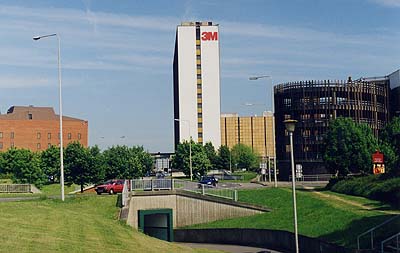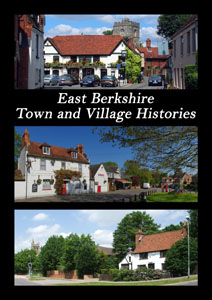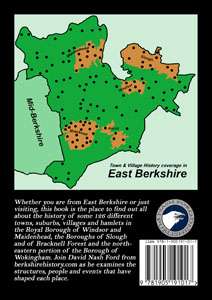 |
 |
||||||||
|
|
The name Bracknell derives from Braccen-Heale meaning Bracken covered Nook. It is mentioned in a Winkfield Boundary Charter of AD 942. The original Anglo-Saxon settlement was probably at Old Bracknell, which spreads out along Old Bracknell Lane. ‘New’ Bracknell (at the time often called Bracknell Street) along the current High Street developed as a stopping point on the route from London to Reading via Staines. Traditionally, this started out, in the 16th century, with just the Old Manor, now a pub and restaurant, and the long lamented Hind’s Head pub on the very edge of the lawless moors. However, this ribbon settlement dates back to at least 1400, the time when the Bull Inn was built as a medieval hall-house. Further down the High Street, another surviving hostelry, the Red Lion (now a smokehouse restaurant), dates from only a hundred years later. The now demolished Hind’s Head Pub had a particularly unsavoury reputation. In the 18th century, its publican apparently came up with an ingenious way of subsidising his income. Any rich traveller who stopped at the inn was given a particularly undesirable room for the night: It had a trap door beneath the bed. When asleep, the unfortunate guest would be tipped down a neck-braking shaft and their possessions taken to swell the innkeeper’s purse. Eventually, a barmaid fell for one of the prospective murder victims and told him what to expect. He ran for help and the publican was quickly arrested. Unfortunately for Bracknell, this story is almost identical to the much better documented version from the Ostrich Inn in Colnbrook. The current Old Manor pub, an early 16th century country house, is just across the road from the site of the Hind’s Head (to the west). It has a beautiful brick frontage added a hundred years later. The building is famous locally for its priest hole, overlooking one of the bars, used to hide Catholic priests during the persecuting Tudor period. It is said to have secret passages connecting to various locations, including the old Hind’s Head. Legend associates them with Dick Turpin, an unlikely patron. Use of the underground passages by the secret priests would seem more likely. However, the story does demonstrate the surrounding area’s infamy as the haunt of bandits.
The main road through the town became a Turnpike in 1759, with an increased number of coaches bringing more genteel visitors. A one-time resident of the town was the celebrated poet, Percy Bysshe Shelley. During the period of his rocky first marriage, in 1813, he took a fancy to a certain Mrs Cornelia Turner and moved to a house called High Elms in Bracknell to be with her. This house stood in what is now the middle of the Met Office Roundabout. They studied the Italian poets together, but how far their relationship went otherwise is unclear. Read more history of
Bracknell and its many suburbs in David Nash Ford's book, 'East Berkshire Town and Village
Histories'.
Click for the Bracknell
Stop on the Berkshire Towns
Tour |
||||||||
| © Nash Ford Publishing 2001; Revised 2020. All Rights Reserved. | |||||||||




 It was at Bracknell, in 1723, that a troop of mounted grenadier guards fought a pitched battle with the infamous band of local criminals known as the
It was at Bracknell, in 1723, that a troop of mounted grenadier guards fought a pitched battle with the infamous band of local criminals known as the

